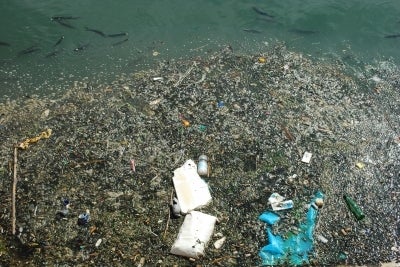Feds may fund cleanup of contaminated Franklin industrial site

A former industrial site in Franklin that’s heavily contaminated from decades-old manufacturing activity is getting new attention from the federal government.
EPA proposes Fisher Street site for priority list
The Environmental Protection Agency is today proposing adding the 18-acre parcel at 300 Fisher St. to its National Priorities List, making it eligible for federally funded assessment and cleanup through the agency’s Superfund program.
The Superfund program, established by Congress in 1980, investigates and cleans up the most complex, uncontrolled or abandoned hazardous waste sites and converts them into productive local resources by eliminating or reducing health risks and environmental contamination associated with hazardous waste sites.
The Fisher Street site has not been active since the 1980s and the current owner, a real estate holding company, BJAT LLC, does not have the resources to conduct the extensive process of decontaminating the site, according to Meghan Cassidy, section chief of the EPA’s Superfund technical and enforcement support division.
Contamination may date back to 19th century
Cassidy said BJAT had worked with the Massachusetts Department of Environmental Protection to assess the contamination at the site, which is surrounded by wetlands and is situated close to Beaver Pond, a popular swimming site.
According to the EPA, testing at the site showed that lead, mercury and zinc, and a number of semi-volatile organic compounds, are contaminating the soil, sediment and groundwater, creating a health risk (the groundwater feeds into a nearby drinking water well) and the environment.
Over the years, manufacturing activity has left areas of process waste and debris on the property, according to the EPA. But Cassidy noted that these activities pre-dated BJAT’s ownership of 300 Fisher St.; BJAT purchased the defunct site with plans to redevelop it.
In fact, it’s likely that some of the contamination occurred before there were any environmental laws in place to prevent it. Beginning in the late 1800s, the property was used for industrial operations, including the manufacture of rubber and plastic products. It changed hands over the years, and uses varied until manufacturing activity ceased in 1985.
“Very often (the case is) that there were no environmental regulations at the time, and certainly practices were different,” Cassidy said.
Today’s proposal to add the Fisher Street site to the National Priorities List will kick off a public comment period, and the EPA will review proposals in September or October. Cassidy said that generally, proposed sites make it to the list, where they become eligible for analysis and cleanup through Superfund. But first, the EPA will determine whether any responsible parties still exist and have the means to help pay for the cleanup, an arduous process that frequently turns up few leads.
“Many times they are orphan sites … and that is when EPA funds would be used,” Cassidy said.
Currently, there are around 120 sites throughout New England that are proposed for, or are on, the National Priorities List. And while decontamination can take a long time, Cassidy said the goal is to eventually bring the site back to a functional state. Today, it’s fenced off to keep people at a safe distance.
Town officials and BJAT representatives could not be reached for comment on plans for potential redevelopment.
Image source: Freedigitalphotos.net









0 Comments